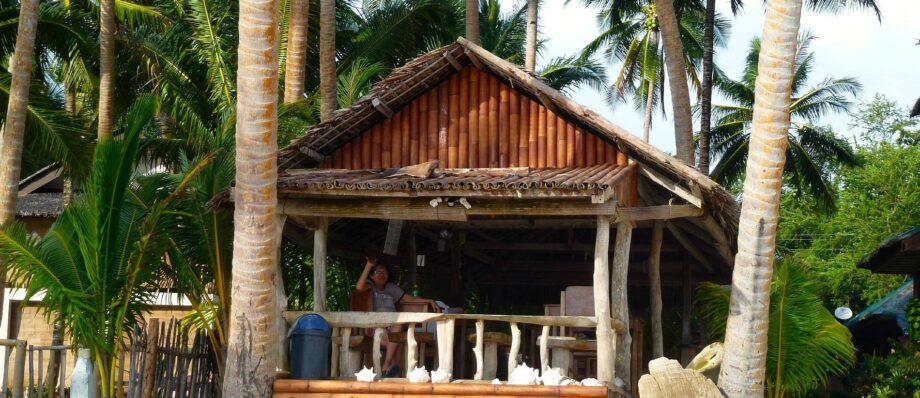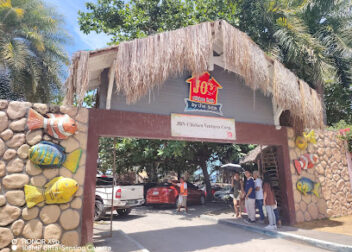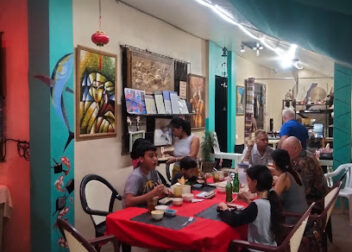How to plan a Bacolod food trip?
This step-by-step guide on planning a Bacolod food trip provides a comprehensive overview for travelers eager to explore the city’s renowned culinary landscape. It emphasizes the importance of researching must-visit restaurants and local delicacies like inasal and piaya, while also offering tips on the best times to visit and how to navigate the vibrant food scene. By following this guide, food enthusiasts can ensure a memorable and delicious experience in Bacolod City, celebrating its rich cultural heritage and festive spirit.
1. Research Local Cuisine
Research Bacolod’s local cuisine by diving into the vibrant world of its culinary delights. Start by familiarizing yourself with signature dishes like Chicken Inasal, a flavorful grilled chicken marinated in a mix of vinegar, calamansi, and spices, known for its smoky aroma and juicy texture. Discover Kansi, a comforting beef soup that blends the flavors of sour and savory, often served with a hint of tamarind. Explore other local delicacies, such as the sweet and chewy Piaya, a flatbread filled with muscovado sugar, and the crunchy yet tender Batchoy, a noodle soup packed with flavor.
Browse food blogs, travel forums, and social media platforms for recommendations and insights into the best dining spots in Bacolod. Look for local foodies who share their experiences, highlighting must-try dishes and hidden gems. Join online communities or forums where travelers and locals exchange tips on where to eat, giving you a more authentic perspective on the culinary scene. Pay attention to posts with vibrant photos and enthusiastic reviews, as these can guide you to some unforgettable dining experiences. By immersing yourself in this research, you’ll not only learn about Bacolod’s local cuisine but also enhance your culinary adventure when you arrive.
2. Create an Itinerary
Draft a detailed itinerary by selecting the restaurants you want to visit during your trip. Start by researching local cuisine and identifying must-try eateries. Make a list of these restaurants along with their specialties. Assign specific days for each dining experience, ensuring to space out your visits for a balanced culinary experience. For example, plan to enjoy a popular brunch spot on Saturday and a renowned dinner venue on Sunday. Include the timing for each meal, like 10 AM for brunch and 7 PM for dinner, allowing time for travel and relaxation between meals.
Incorporate famous local markets and street food stalls into your itinerary for an authentic taste of the area. Identify bustling markets that offer a variety of local dishes, and set aside time to visit them. Schedule your market visits for lunch or snack times, perhaps around 1 PM, to sample different street foods. Make note of specific stalls known for their unique flavors and dishes, such as a famous taco stand or a beloved dessert cart. This approach not only enhances your culinary journey but also immerses you in the local culture and atmosphere.
3. Plan Your Accommodation
Choose accommodation that places you near popular food spots to maximize your culinary adventure. Look for hotels or guesthouses located in vibrant neighborhoods known for their dining options. Use online maps and local food blogs to pinpoint areas with a variety of restaurants, food markets, and cafes. Prioritize accommodations that are within walking distance to these culinary highlights, as this will allow you to explore different eateries without the hassle of transportation.
Seek out options that provide easy access to public transportation if walking is not feasible. Check for hotels near subway stations or bus routes that lead to popular food districts. Reading reviews can also help you identify places where guests rave about the convenient locations. By strategically selecting your stay, you’ll not only save time but also immerse yourself in the local food scene, making your trip both delicious and memorable.
4. Budget for Your Trip
Create a detailed budget that accounts for meals, accommodation, transportation, and any additional costs. Start by listing your daily expenses for each category. For meals, determine how many meals you’ll eat out each day and allocate a budget for each. For example, if you plan to eat breakfast at a local café, expect to spend around $10. For lunch, aim for a range of $12 to $20 at casual restaurants. For dinner, consider slightly higher prices, roughly $25 to $40, depending on the type of restaurant you choose. Don’t forget to include snacks or treats, as these can quickly add up over the course of your trip.
Research the price ranges of accommodations in your destination. Look for hotels or vacation rentals that fit your budget while also offering comfort and convenience. For example, if you find a charming local inn for $100 a night versus a hotel chain for $150, consider the value of your choice based on amenities offered. For transportation, include costs for public transit, taxis, or rental cars. Estimate around $10 to $20 daily for public transport or set aside $50 to $80 a day for a rental car, including insurance. Finally, set aside some funds for additional costs like souvenirs or entrance fees to attractions, allowing for flexibility in your spending.
5. Explore Local Culture and Events
Research local festivals and culinary events in Bacolod before your trip. Check online for a calendar of events that highlight traditional dishes, cooking competitions, or food fairs that celebrate the city’s vibrant culinary scene. Engage with local tourism websites or social media pages that provide up-to-date information on happenings during your visit. Look for events like the MassKara Festival, which not only showcases colorful street dancing but also features various local delicacies. Mark your calendar for these events, as they can offer unique tasting opportunities and a chance to interact with local chefs and food enthusiasts.
Immerse yourself in the cultural experiences these events provide. Attend cooking demonstrations or workshops where you can learn to prepare Bacolod’s signature dishes, such as inasal (grilled chicken) or piaya (flatbread filled with muscovado sugar). Don’t hesitate to ask local vendors about their recipes or the history behind their dishes; most are more than happy to share their culinary secrets. Participate in food tastings or guided tours that include visits to local markets, where you can discover fresh ingredients and regional specialties. Capture these experiences with photos and notes to enhance your understanding of Bacolod’s rich food culture.
Final Tips for Foodies
In conclusion, planning a Bacolod food trip can be an exciting adventure filled with delicious discoveries. By researching local favorites, creating a flexible itinerary, and embracing the rich flavors and culture of the city, you’ll ensure a memorable experience. So gather your friends, set your taste buds ready, and enjoy every moment of this culinary journey through Bacolod! Happy eating!
Essential Supplies Needed
- Travel guidebooks
- Local food maps
- Restaurant menus
- Cooking classes or workshops
- Travel apps for navigation
- Food diaries or journals
- Budgeting apps or spreadsheets
- Event calendars or brochures
- Travel insurance documents
- Local transportation options (e.g., maps or schedules)
Essential Insights
- Research Local Favorites: Start by looking up popular local dishes and must-try restaurants in Bacolod, like inasal, batchoy, and piaya
- Create a Food Itinerary: Organize your food stops by area to maximize your time and minimize travel between locations
- Ask Locals for Recommendations: Engage with locals for hidden gems and lesser-known eateries that might not be in travel guides
- Check Food Festivals: If your trip coincides with local food festivals, make sure to attend for a taste of various dishes in one spot
- Be Open to Street Food: Don’t miss out on street vendors; they often serve authentic and delicious food that you won’t find elsewhere
- Consider Dietary Restrictions: Make sure to check menus in advance if you have dietary restrictions, as some places may not cater to specific needs
- Plan for Peak Hours: Try to visit popular spots during off-peak hours to avoid long waits and to enjoy a more relaxed dining experience
- Stay Hydrated: With all that food tasting, make sure to drink plenty of water to keep your energy up throughout the trip
- Take Notes: Keep a food journal to jot down your impressions and favorites; it’s helpful for future trips or sharing with friends
- Allow for Spontaneity: While planning is great, leave some room for spontaneous stops—sometimes the best meals come from unexpected places!
Navigating Bacolod: Your Guide to Attractions
- Explore Tourist Spots: Start your journey by visiting iconic attractions like The Ruins, San Sebastian Cathedral, and the Negros Museum. These sites offer a glimpse into Bacolod’s history and culture
- Savor Local Cuisine: Don’t miss trying Bacolod’s famous dishes! Sample Chicken Inasal (grilled chicken), Kansi (sour beef soup), and various delicacies at the Manokan Country food stalls. A food trip is a must!
- Experience the Entertainment: Look for local festivals like the MassKara Festival if you’re visiting in October. You can enjoy street dancing, vibrant masks, and lots of local music. Check out live music venues or bars for a taste of Bacolod’s nightlife
- Find Comfortable Accommodation: Choose from a variety of places to stay, from budget-friendly hostels to luxurious hotels. Look for accommodations in the city center for easy access to attractions, dining, and entertainment
- Engage with the Locals: Don’t be shy! Chat with locals for insider tips on hidden gems, the best eateries, and cultural experiences. They can provide valuable recommendations and help you make the most of your visit
- Enjoy your Bacolod adventure!



